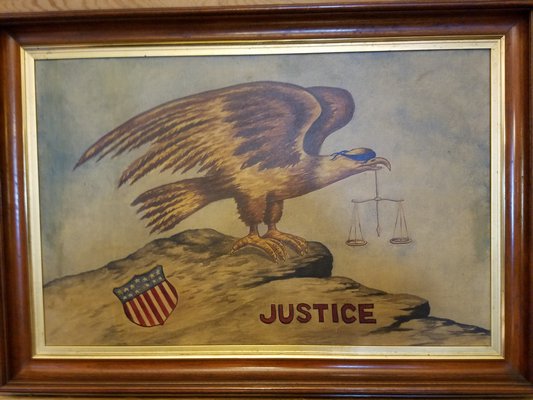
The Fourth of July is our great national holiday, the day in 1776 when the Continental Congress adopted the Declaration of Independence.
Of the 56 signers of the Declaration of Independence, four were from New York, including William Floyd of Brookhaven, who was the first U.S. representative from the state’s First Congressional District, which has included the East End to this day.
Like the other New Yorkers, Floyd has roads, airports and schools named after him as do Francis Lewis, Lewis Morris and Phillip Livingston (founder of Kings College now Columbia University).
John Adams predicted that July 2—the date that the Second Continental Congress approved a motion for independence from Great Britain and King George III—would become the most famous day in the history of the country and that it should be remembered with parades, fireworks, and other commemorations as befitted the Day of Independence. History instead settled on celebrating the date that the Declaration was ratified. Perhaps the most famous sentence in the whole Declaration is:
“We hold these truths to be self-evident, that all men are created equal, that they are endowed by their Creator with certain unalienable Rights, that among those are Life, Liberty and the pursuit of Happiness.”
Thus with the signatures of 56 men from 13 colonies the United States declared to the world its independence, serving as a model for other citizens in other countries to seek redress from oppression by declaring life, liberty and the pursuit of happiness as the ideal. It is no surprise that Americans took to the streets for their celebrations. After all the holiday is celebrated in summer, the perfect time for parades, bunting, flag hanging and that uniquely American custom of making commemorative items in celebration of the day.
With this is mind, I revisited my friends who have been collecting American folk art for almost half a century. One of the prized items in their collection is a commemorative hooked rug for the 100th anniversary of the Declaration in 1876. Many 19th century hooked rugs take their subject matter from American history and remembrances of special days and events. Another fabulous rug in their collection commemorates the day Abraham Lincoln died after being shot in Ford’s Theatre in Washington, D.C. As an added bonus they acquired two tassels from the drapery tie-backs of the theater, which they put over one corner. This is a coveted rug worth thousands of dollars that my friends had to outbid Paul Newman for at auction almost 25 years ago.
While handmade rugs were not uncommon in England in the 18th and 19th century, it is in America that the craft of making rugs was turned into an art form. They’re simple enough; you just pull material through a stiffer fabric like burlap with a hook. In England, rug hooking was considered a “craft of poverty” with women using old feed bags and every and any scrap of material available, including old clothing. They were almost always used as floor coverings. In America, rug hooking as we know it today developed along the Eastern seaboard of New England. Popular ladies’ magazines in the 19th century never wrote about rug hooking; it was considered a country craft in the days when the word “country” was derogatory.
But what better way to celebrate the country than making a special rug for the occasion? Not one that would be walked on, but one that would be displayed proudly on a wall in your home. So these humble rugs became an icon in American decorative arts. They, like many commemorative things for our national holidays, are examples of our unique American sensibilities, things like using humble materials, simple design, references to life, liberty and happiness.
Of course, hooked rugs are just one of many ways we remember our Independence Day. It would seem like any object not in use (and some that were) could be painted, adapted or used in celebration. All kinds of flags come out this month, like the original 13-star flag. Then there is bunting, which we see adorning buildings and homes for the Fourth of July.
Americans’ creativity knows no bounds as a cast-iron top hat spittoon painted with stars and stripes shows or the tin signs, barber poles, canteens, jugs and jars indicate. Everyday objects repurposed as patriotic odes. All of which are collectible items and valuable today because they’re scarce. And in some cases, very valuable!
For the serious collector of American memorabilia, nothing says more about our country and its dedication to the ideals set forth in the Declaration then the many etchings found in early pamphlets, newspapers and journals. Sometimes they don’t even require a quote; the image says it all, like the “Justice is Blind” depiction of the bald eagle, blindfolded with the scales of justice in his beak. Other collectibles from the 19th and early 20th century all reflect something of our character and seriousness of purpose like pictures of presidents, signatures, books of speeches, periodicals showing moments of history like George Washington crossing the Delaware or the founders signing the Declaration of Independence in Philadelphia.
Such are the demonstrations of love of country that Americans have embraced from the beginning or more accurately since July 4, 1776. Whether you celebrate with flying the flag, bunting your porch, having a picnic, enjoying the fireworks or going to an American folk art auction, you are doing what John Adams would have wanted and we’re all celebrating in remarkably similar ways to 242 years ago. The possible exception is that few are commemorating the day by hand hooking a rug for the occasion!